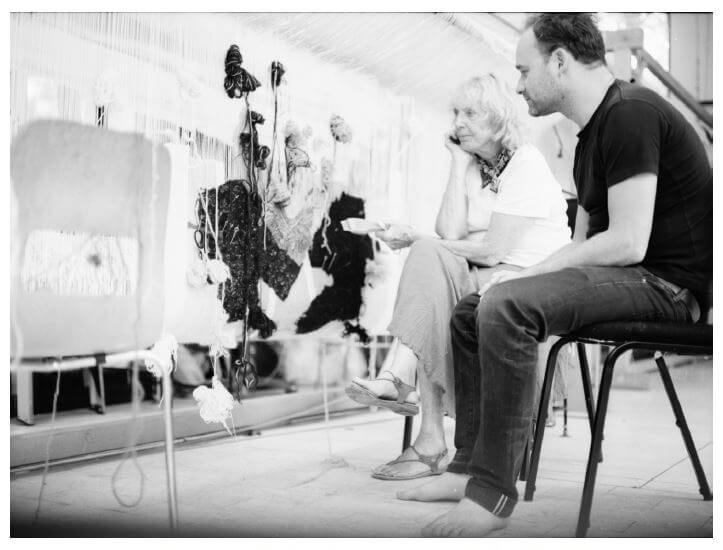A LANDMARK IN ABSTRACTION
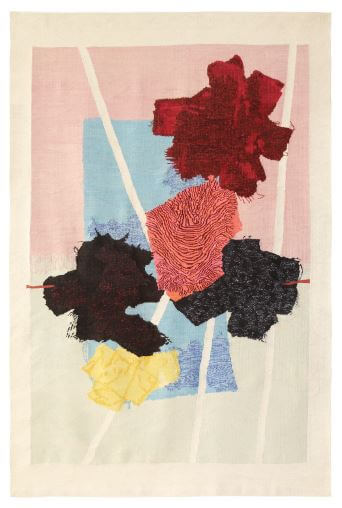
Constraint is Jacob van Schalkwyk’s first tapestry with Marguerite Stephens.
Hand-woven at Stephens Tapestry Studio outside Johannesburg, Constraint follows three years of conversation between Stephens and Van Schalkwyk about tapestry, with Van Schalkwyk researching key aspects of the Studio’s production, both in Swaziland and Johannesburg.
“I needed time to learn the vocabulary of weaving, but also to familiarise myself with Marguerite’s work. She has spent fifty years working with artists. If Constraint was going to be something fresh, I had to get myself up to speed with what she’d done in the past.”
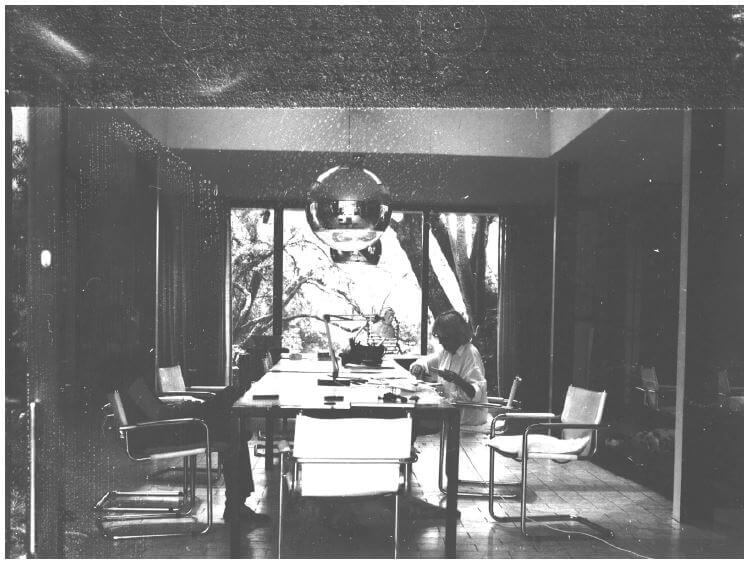
Van Schalkwyk visited Swaziland to acquaint himself with the processes by which mohair is prepared for weaving in the studio. For the tapestries, absolutely everything is done by hand. The mohair arrives in its raw state before being plucked, carded and spun by hand.
“Essentially, the production of tapestries supports an entire valley in Swaziland. Almost everyone there is involved in preparing and dying the mohair before it is sent to Johannesburg ready to weave. It is a hugely labour-intensive process. I left feeling that the mohair has immense value.”
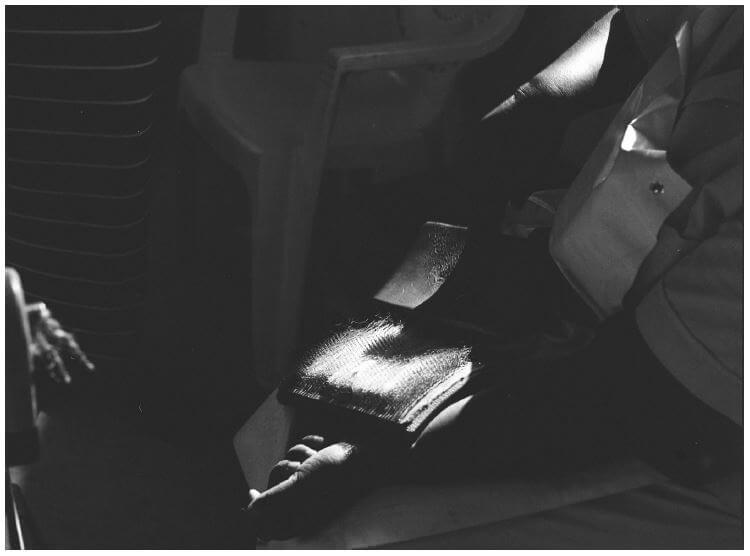
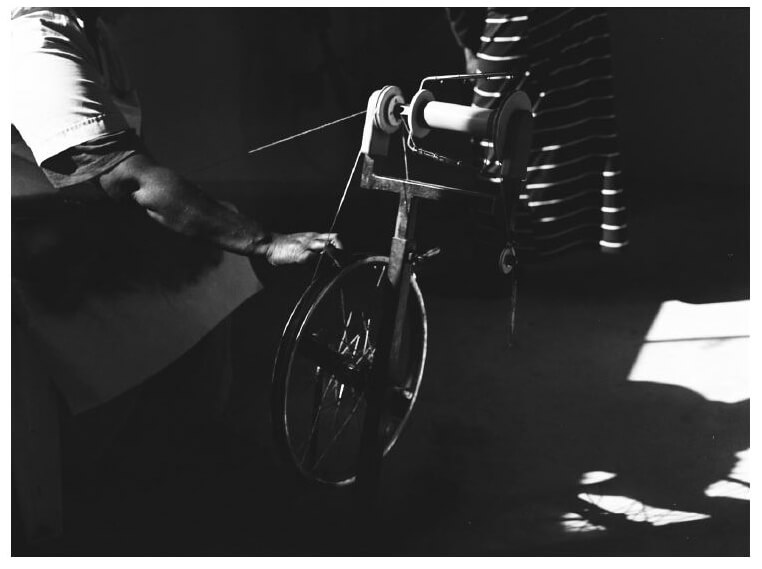
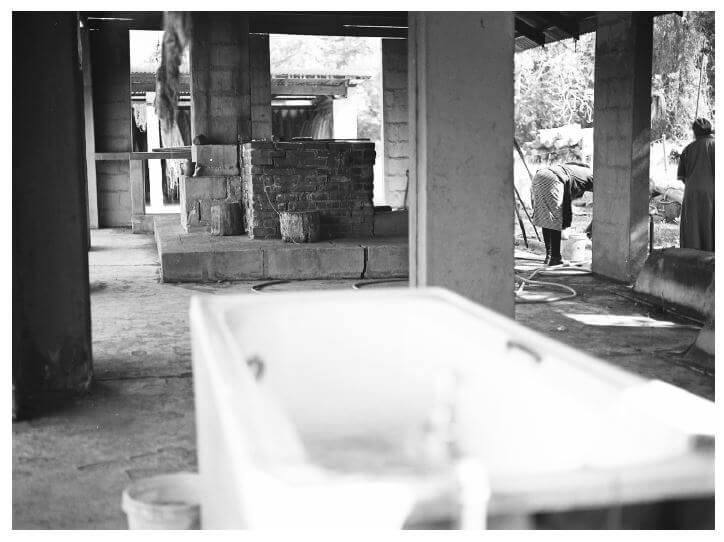
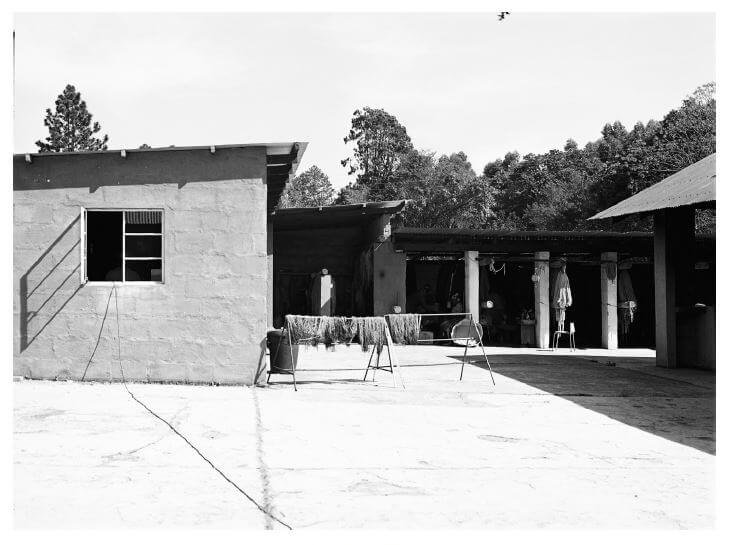
While in Swaziland, Van Schalkwyk visited Coral Stephens Handweaving, where the same mohair is used to make decor items like carpets, curtains, blankets and upholstery.
“Something clicked between what I saw there and the African textiles I’d been looking at in books at home. I wanted to work with the warp thread to create texture as a way of replicating in tapestry the kind of plasticity I play with in my work with lithographic ink.”
INFLUENCES
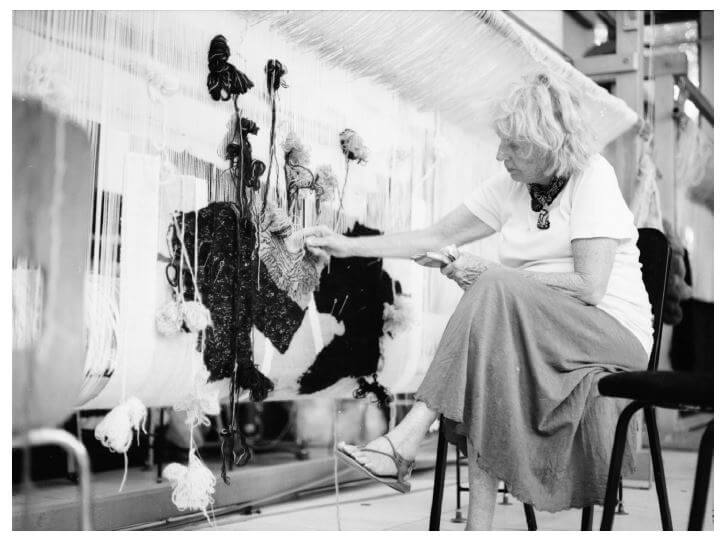
Back in Johannesburg Marguerite showed Van Schalkwyk some of the work she had done with Judith Mason, who made extensive use of exposed warp threads in tapestries like La Lonza alla pella dipinta.
“Mason and Marguerite worked very closely together. Her studio and home is filled with Mason’s work, so I’d walk around immersed in what they’d made together. While Constraint was being woven, Mags told me stories of their time together, most of which were very funny. I didn’t see the influence of Judy Mason’s work coming. I thought we’d follow on what Mags had been doing with Robert Hodgins more closely.”
When Marguerite and Van Schalkwyk first spoke in 2015, it was around her work with Walter Battiss and Robert Hodgins. She’d exhibited Hodgins’s New Orleans Dandy at Gallery AOP, where Van Schalkwyk’s work was represented at the time.
“We discussed how Hodgins used to treat colour transitions – by twisting multiple threads of colour together and then weaving those into each other on the edges where his colours met. It’s a very painterly solution.”
Some of that conversation survives in Constraint, particularly where its pink and blue flats meet. An evolution of Hodgins’s painterly use of colour mixing is prevalent in how Van Schalkwyk and Stephens treated the darker areas of the tapestry:
“We combined specifically, say, 8 low-key strands with a single high-key strand of blue or red in those areas, so that the texture of the weave combined with the colours of the threads to mix optically when viewed from a distance. This kind of textural optical mixing brings a resonant energy to the tapestry that makes for a very vibrant viewing experience. This is something I saw exploited in some of the African textiles I’d been looking at. They just sizzle when you look at them.”
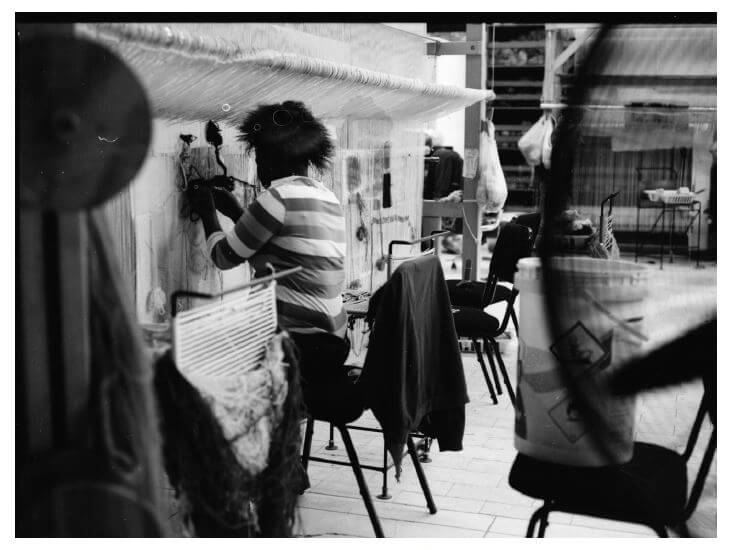
Despite incorporating techniques from further afield, Constraint remains firmly within the tradition of tapestry. Stephens and Van Schalkwyk spoke a great deal about reigning in their decisions.
“We wanted something that united slight variations rather than disparate techniques. It’s not a patchwork quilt, you know. It is very much a tapestry, the result of a very simple way of weaving to create something startlingly complex.”
AN ABSTRACT TAPESTRY
In the end, the innovative nature of Constraint came as a surprise. “We were having lunch and I asked Mags if she’d ever done a purely abstract tapestry before. She thought for a bit and then just said ‘No.’ We both laughed. I mean, it’s pretty funny that it has taken half a century for anyone to approach the Stephens Tapestry Studio with abstraction in mind. I’m obviously very proud that Constraint is the first.”
